Hartford Courant (Neag School alumnus, Noam Sturm, is the new principal at Roaring Brook School in Avon, Conn.)
Center for Career Development: Q&A With Teacher Kimberly Ruiz
Editor’s Note: This Q&A originally appeared on UConn’s Center for Career Development website.
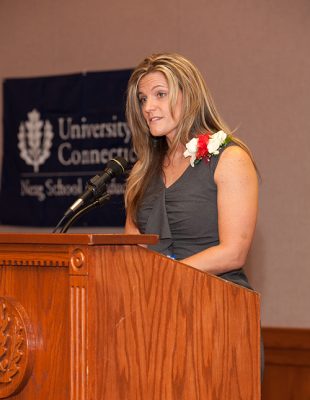
The Center for Career Development was thrilled to connect with Kimberly Ruiz, Neag School alumna and fourth-grade teacher at Dorothy C. Goodwin Elementary School in Mansfield, Conn. Ruiz graduated with her master’s in elementary education in 2000 and currently holds a 092 certificate as well; she was the recipient of the 2012 Outstanding School Educator Award from the Neag School of Education Alumni Society. Utilizing the skills and connections developed through her UConn experience, Ruiz has clearly found her calling in teaching and education.
We asked her several questions regarding her experience and advice she has for current students interested in the field:
- What is the most rewarding aspect of teaching? What is the most challenging aspect of teaching? The most rewarding aspect of teaching is that “a-ha moment” you see on a student’s face when they finally understand something that they have been working so hard at grasping and they experience success for the first time. Seeing students excited about learning and excited about their success, no matter how big or small, is the greatest thing to witness and be a part of. The most challenging part of teaching is finding the time to fit everything you want to teach and impart into a school day, week, month, year. There’s so much to cover and so many fun and innovative ways to do it, there just never seems to be enough time.
“Seeing students excited about learning and excited about their success, no matter how big or how small, is the greatest thing to witness and be a part of.” Kimberly Ruiz ’99 (ED), ’00 MA, fourth-grade teacher
- Please describe your first professional experience. How has it helped you get where you are today? My first professional experience was when I was a Neag student and was working as a student in the schools I was placed in for clinical, student teaching, and interning. The experiences I had with amazing leaders and teachers helped me to understand who I wanted to be as a teacher and teacher leader. It helped me to understand how to work with colleagues, parents, and students. It helped me to see that you can teach and have fun and make meaningful connections with students, parents, and staff members. There’s so much to learn in these placements if you’re willing to dive into the school community and go above and beyond the description of your placement.
- If we visited your classroom, what would we see? An inviting and homey environment that is focused on student-centered learning, student discussions, inquiry-based learning – individually, in partners, and small groups. Students using Chromebooks and Google classroom to discuss, teach, and communicate with each other, and respond to essential questions. You would see me as the facilitator of these things. Anchor charts that reflect mini lessons that they could refer to later on and reference. Flexible seating options are available to suit everyone’s learning styles and an environment that is fun, respectful, and collaborative with opportunities for creative expression.
- How do you manage your time effectively? I have a fabulous teammate (also a Neag alumnus!) and we do as much as we can to share the workload and really hold true to DuFour and DuFour’s principles of Professional Learning Communities. I use my planning time to plan and have a block of time after school allocated for parent and colleague communication. I often answer emails at home and do the best I can to find a good balance of work/home/self. I try to implement systems of management within my classroom that hold my students accountable for some of the things that they are capable of managing that I don’t have to and, therefore, this allows me more time to conference with students and work 1-1 with those who need it. However, let’s face it … everything a teacher must do to be successful with his or her students couldn’t possibly be done within the school day, so teamwork and efficiency are key, along with finding a schedule that works best for you.
- What is the No. 1 piece of advice you have for a student who desires to go into education? My advice is to make sure that you are focused on your passion and find opportunities to become a leader in some way. For me, it’s the students. There are so many aspects of the job that can cloud your focus or keep you busied with other tasks that it can be easy to lose focus at times. In the end for me, it all comes down to the kids. I am constantly asking myself “How will this help my students? Is this something that will impact my students positively if I become involved?” [Whether it is committees, reviews, or extracurricular opportunities]. Sometimes, the answer is simple, and other times, it will benefit my students because it will invigorate me and therefore help me to be better for them. My advice is to remain focused on your passion and find small ways to be a leader.
Are you interested in connecting with more individuals in your field? Stop by the Center for Career Development for guidance regarding networking and how to effectively reach out to professionals like Kimberly Ruiz!
Access the original Q&A on the UConn Center for Career Development website.
What’s the Value of a Technical Education?
WNPR (AUDIO: Neag School’s Shaun Dougherty was a guest panelist regarding technical education in Connecticut and nationwide)
A Turning Point for the Charter School Movement
TruthOut (Neag School’s Preston Green offers insights on recent legal rulings impacting charter schools)
Windsor High Begins New Year With New Principal
Hartford Courant (Neag School alumnus, current Ed.D. student, and former UConn football player, Uyi Osunde, is the new principal)
When Public Charter Schools Are Private
The 74 (Neag School’s Preston Green is interviewed regarding a recent National Labor Relations Board ruling on charter schools in N.Y. and Pa.)
Concussions in Football: Cochran More Committed Than Ever
Record Journal (Neag School graduate student, Casey Cochran, was interviewed about his decision to quit football due to numerous concussions)
Milagros Castillo-Montoya: Pursuing a Path Toward Equity in Higher Education
Not too long ago, Neag School of Education assistant professor Milagros Castillo-Montoya was rummaging through her closet when she stumbled upon a booklet from her undergraduate days at Rutgers University.
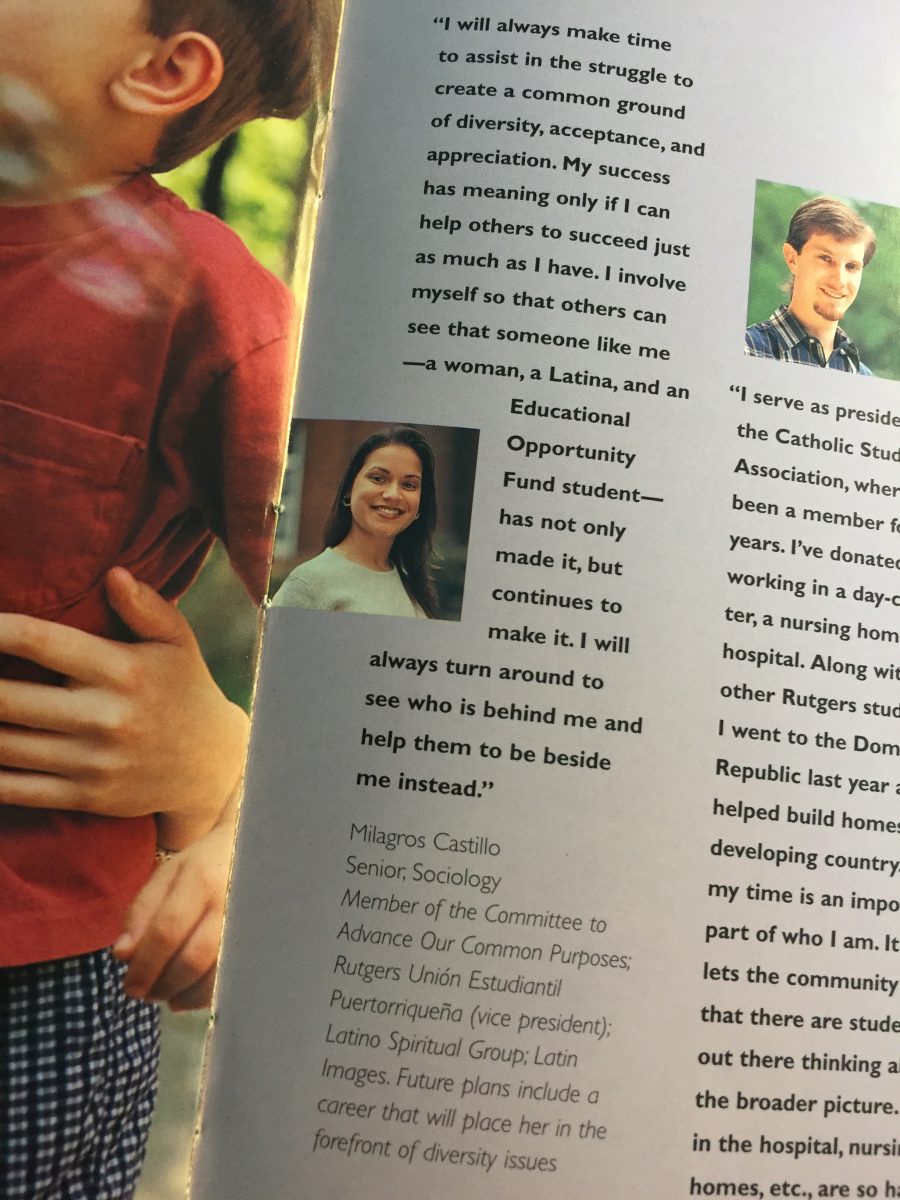
Castillo-Montoya has dedicated her career as a faculty member, mentor, and researcher to expanding access to and creating equity in the realm of higher education for minorities — an ambition she was recently surprised and pleased to find, in that booklet from the past, also belonged to her 19-year-old self.
“I can’t believe what I was thinking and experiencing so many years ago I’m still thinking about now — and I’m doing it now,” says Castillo-Montoya, who discovered she wanted to become an educator after visiting Rutgers University on a high school field trip. At Rutgers, she met a Latino professor — the first she had ever encountered — and decided she wanted to follow in his footsteps.
Now a faculty member as well as interim director for the Neag School’s Higher Education and Student Affairs (HESA) program, Castillo-Montoya has brought along her knowledge and passion for teaching and learning in classrooms with diverse college students. Among her most recent endeavors is creating a professional development seminar to help university faculty engage in and activate classroom diversity. This project is funded by American College Personnel Association (ACPA) as well as the Neag School through the Dean’s Research Incentive Award. Castillo-Montoya plans to pilot the program during the 2016-17 academic year.
This project comes on the heels of a collaboration with three colleagues at other universities that involved providing professional development on how to develop equity-minded syllabi, pedagogy, and assignments in graduate-level higher education and student affairs courses. The material, which she presented this past spring at the American Educational Research Association (AERA) Annual Meeting, is something she says she hopes to expand in reach, both nationally and internationally.
Castillo-Montoya is also serving, in collaboration with Neag School faculty Jennifer McGarry, Blanca Rincón, and Justin Evanovich, as principal investigator on a Public Discourse Project funded by the UConn Humanities Institute focused on mapping out the social justice and equity efforts of faculty and staff at the Neag School.
Thriving in her research and her teaching, Castillo-Montoya says she enjoys being a part of the Neag School of Education. “The Neag School is thinking hard about diversity. We’re on the right path,” she says. “I’m in a place where people care about understanding how to be better educators.”
Focused Scholar and Supportive Mentor
As an academic scholar, Castillo-Montoya thinks beyond her own classroom. But, she says, it is not uncommon for a student to pose a question in class that then inspires an idea for research. In fact, upon her arrival at the Neag School, many of her HESA students expressed an interest in learning more about how their social identities shape who they are, how they interact with others, and, ultimately, how they engage in their practice as student affairs professionals. Immediately, Castillo-Montoya considered how her research in teaching in classrooms with diverse students and her scholarly interest in intergroup dialogue could become a method for teaching within HESA.
Those initial thoughts are now fueling her teaching as well as her research. This past spring semester, Castillo-Montoya was awarded a UConn Reads grant to develop and implement three dialogues on race at the Neag School. She led these sessions with program specialist Danielle DeRosa and in partnership with faculty and staff from the Neag School and the Division of Student affairs. This fall, Castillo-Montoya, along with DeRosa and UConn staff, Charmane Thurmand and Rebecca Herman, will continue this work by launching a revised version of the HESA groups course to incorporate intergroup dialogue as a central feature of the course. Castillo-Montoya is also collaborating with Rincón on a research grant they received as part of the White House Collaborative on Equity in Research on Women and Girls of Color. They will examine how race dialogues may mediate department climates for women of color studying STEM fields in college.
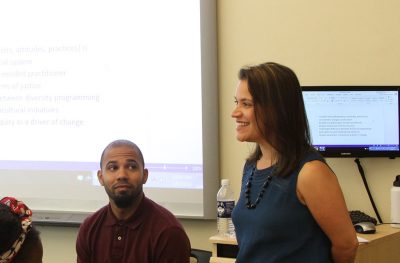
“What I research impacts what I teach, and vice versa,” says Castillo-Montoya, who has received special recognition for her teaching evaluations for the past two years from UConn Provost Mun Choi and Vice Provost for Academic Affairs Sally Reislast fall and also was selected by ACPA as one of its 2016-18 Emerging Scholar-Designees. “There’s a lot of synergy between the two — they’re always speaking to each other in my brain.”
The synergy Castillo-Montoya likes to cultivate with students inside the classroom also occurs outside of it. For instance, Castillo-Montoya, along with HESA alum Truth Hunter ’14 MA, is working on research about racial microaggression that they anticipate will support practitioners, professors, and administrators alike, who want to alleviate the disempowerment experienced by those who are targets of such incidents.
Hunter, now assistant director of educational opportunity programs at Bard College, was new to research when she joined the project, but says she found in Castillo-Montoya an invaluable mentor who showed her how to practice discipline and time management skills. Castillo-Montoya also led by example, Hunter says, pouring enthusiasm and energy into her work that proved infectious.
“She made it clear that we would share the work 50-50, and that she was going to treat me like a valued colleague,” Hunter says. “This way of thinking is rare. Often times, young scholars are only considered as ‘assistants,’ but she made sure she treated me like an actual partner.”
Castillo-Montoya’s scholarly focus on inclusive practices and how to incorporate them into diverse classrooms means that her research findings become key components of her course curricula. At the same time, a hallmark of her classes is the attention given to in-depth discussions. In her course “Leading in a Multicultural Environment,” students engage in group dialogue beyond class material, around real-world issues such as discrimination and injustice in higher education. Woven into each discussion are higher-level questions where Castillo-Montoya’s students are encouraged to incorporate personal experiences into their responses — albeit challenging at first, she says, but by the end of the semester, they are much more comfortable discussing such heavy topics — even when they disagree. One of the most important skills they learn, she says, is how to talk through disagreements.
Fostering this ability in students requires Castillo-Montoya to connect with her students on an individual level, says Alessia Satterfield ’16 MA, a recent Neag School graduate.
“There is no ‘one-size-fits-all’ mentality because Dr. Castillo-Montoya invests in every student based on where they are in their own journey. She always asks and follows up about life outside of class,” Satterfield says. “There is more than just teaching going on in her classroom; there is constant love and support.”
“The Neag School is thinking hard about diversity. We’re on the right path. I’m in a place where people care about understanding how to be better educators.” Milagros Castillo-Montoya, assistant professor
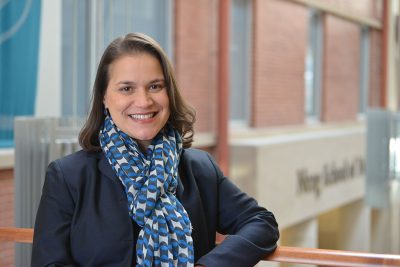
Inclusion Versus Isolation
Growing up in Jersey City, N.J., and experiencing a range of perspectives and backgrounds was a part of everyday life for Castillo-Montoya. Attending school was a lesson in diversity — not due to the material taught in class, she says, but through her interactions with fellow students, among whom a plethora of religions, languages, cultures, ethnicities, races, and sexualities co-existed.
“I knew a lot about other cultures through conversations outside the classroom, but not through [class] material. I didn’t know that could’ve been incorporated,” she says. “It made me someone who was really interested in and valued differences. I never viewed differences as a bad thing, but rather as a resource and an opportunity.”
However, that inclusive, multicultural environment that Castillo-Montoya had become accustomed to all changed when she entered college. It was a dramatic change, she says, to become immersed in an environment where certain groups of students felt disconnected — even isolated — from the larger campus community.
Seeing other minority students struggle in this environment, Castillo-Montoya’s honors thesis and project became devoted to studying the campus climate for Latino students. As her education progressed, she broadened her academic focus to include the education experiences of all minorities. Castillo-Montoya went on to receive a master’s degree in social work from Rutgers and a doctorate degree in education in higher and postsecondary education from Columbia University.
While these personal experiences have certainly come to shape her research interests, they also have come to play a central role in her philosophy inside and outside the classroom. To Castillo-Montoya, her students’ unique set of beliefs, values, and experiences allows them to serve as a resource — one that improves student learning as well as her own approach to teaching.
“I wouldn’t be who I am,” she says, “without this diversity.”
To learn more about the Neag School’s HESA program, visit hesa.uconn.edu. Follow Dr. Castillo-Montoya on Twitter at @DrMontoya2.
UConn Professor Stresses Social Skills
Cayman 27 (Neag School’s George Sugai offers insights on student success)
10 Questions With Reuben Pierre-Louis, Future Special Education Teacher
In this new series, the Neag School is catching up with students, alumni, faculty, and others throughout the year to give you a glimpse into their Neag School experience and their current career, research, or community activities.
Click the image below to check out an interactive, 360-degree view from inside UConn’s Scholars House.
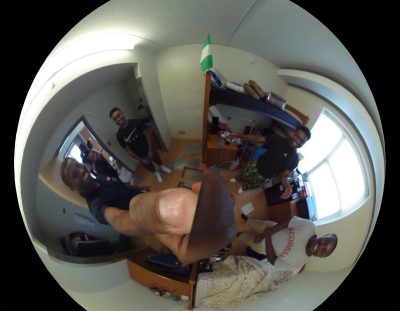
Current UConn student Reuben Pierre-Louis ’17 (ED), ’18 MA is set to begin his senior year in the Neag School’s five-year Integrated Bachelor’s/Master’s (IB/M) program with a concentration in special education. In addition, he will be serving as a resident assistant this coming academic year in UConn’s new ScHOLA²RS House Learning Community.
ScHOLA²RS House – which stands for Scholastic House Of Leaders who are African-American Researchers & Scholars — is designed to support the scholastic efforts of male students who identify as African-American/Black through academic and social/emotional support, access to research opportunities, and professional development. For more information about ScHOLA2RS House, visit lc.uconn.edu/schola2rshouse/, or check out this video.
What is your hometown? Stamford, Conn.
What degree(s) are you pursuing at the Neag School of Education? I am pursuing a bachelor’s degree in education with a concentration in special education and a master’s degree in educational psychology through the Neag School of Education IB/M Program.
What led you to choose to pursue a degree in the field of education? I chose this profession because I love to learn what I was taught and teach what I have learned. One of the main reasons I chose this profession is the bad experience I had in the the school system growing up. Looking back now, I felt robbed of an education. As if I was “pickpocketed.” I watched how the tracking system in high school was so vast that you would think we were in the 1960s school system. I watched many black and Hispanics, especially men, die through many systematic pits. I watched a school system that would breed “us” to believe that our only salvation was either holding a football or a basketball. I know this sounds cliché, but I truly believe I can and will make a difference one day.
What are your ultimate career goals once you complete your degree? I want to go back and help uplift poor communities, especially the black community, and make a change. I want to teach at a school that I can believe in. A phrase that I heard from another teacher that always stuck with me is: “The best teachers need to be at the worst schools.” It does not always work out that way. I am also interested in special education research — in particular, mental health disorders. [I grew up with] a father who was diagnosed with schizophrenia; it really changes your perspectives on things. I want to figure out the underlying causing of mental health disorders, but most importantly, what is the best treatment possible.
“I want to … help uplift poor communities, especially the black community, and make a change. I want to teach at a school that I can believe in.” Reuben Pierre-Louis ’17 (ED), ’18 MA
What kind of support have you received along the way from faculty mentors during your time at the Neag School of Education? I would say the tag team counselors [academic advisors] Dominique Battle-Lawson and Mia Hines have helped me on a consistent basis. They have helped me in so many different ways, from passing the Praxis test, [giving me] recommendations, and the list goes on. One of the main social supports for me was former graduate assistant Justis Lopez ’14 (ED), ’15 MA. Before I got accepted [to the Neag School], Justis helped me along the way. Also, faculty like Joseph Cooper and Erik Hines [ScHOLA²RS House faculty director] are role models for me as an African-American male. Even though I am the only black male in most of my classes now, I feel comfortable to know that there is a decent amount of African-American faculty that I can talk to.
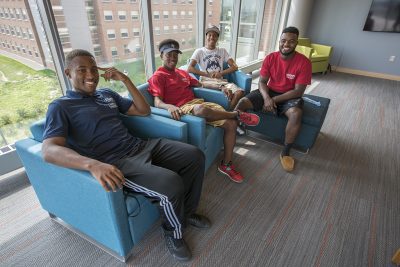
As a resident assistant at ScHOLA²RS House, in what ways do you envision being able to support the students who will be a part of this new Learning Community? I think I will be able to serve as a leader, mentor, and a friend to the students in this Learning Community. I see myself providing advice and guidance on a daily to weekly basis to help them to stay on track. I want the students to succeed not only academically, but also socially on campus. What I learned through my years in college is that you can be a great student academically for a while, but if you do not have a solid social network, it most likely won’t last.
What do you see as the greatest benefit of launching ScHOLA²RS House as a new Learning Community? Students of color will have a space in a predominantly white institution.
Why do you feel it is important for UConn to establish a Learning Community like this? If they don’t, the University will slowly lose its black population … Why do you think the University has on-campus centers like the AACC (African American Cultural Center)? If UConn starts losing its educated black population to … HBCUs [Historically Black Colleges and Universities], this can affect the economy of Connecticut because people usually work in the state where they graduate. This Learning Community is bigger than what it appears.
What do you believe makes a great educator? A great educator has to be personable, humble to learn, and has to be self-driven.
What is one thing most people may not know about you? I am Haitian.
Watch Reuben Pierre-Louis speak, along with faculty and administrators, about the new ScHOLA²RS House Learning Community in this video. Check out additional photos from ScHOLA²RS House move-in day.
